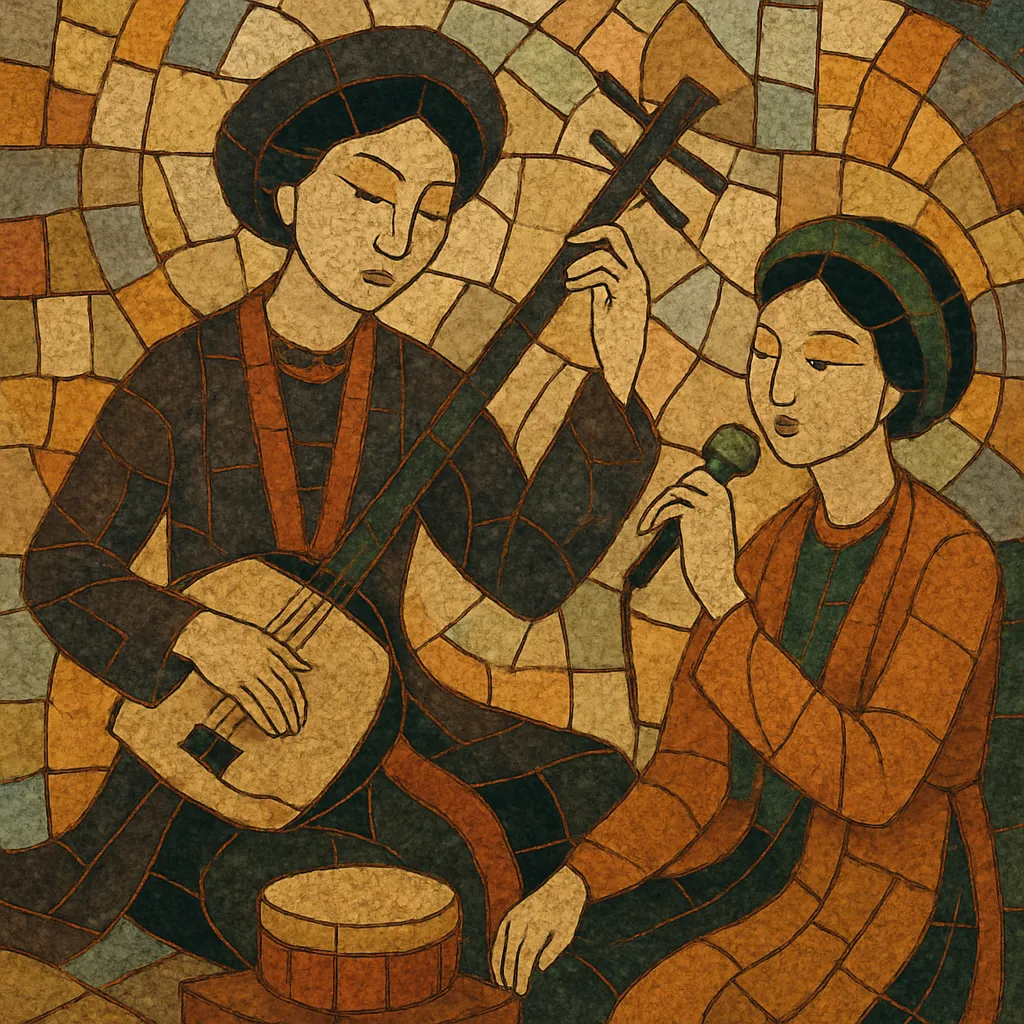Ca trù is a refined Vietnamese art music of sung poetry that flourished among the literati and urban guilds of northern Vietnam. It is typically performed by a female vocalist (ca nương) accompanied by a đàn đáy (a long‑necked, three‑string lute), a set of bamboo clappers (phách) struck on a small wooden soundboard, and a ceremonial praise drum (trống chầu) played by a male adjudicator.
Its musical language features flexible, breath‑driven phrasing, extensive melismatic ornamentation (nhấn, rung, luyến, láy), and modal intonation with subtle microtonal inflections. Rhythmic organization is articulated through phách cycles and responsive drumming cues rather than strict Western meter, producing an elastic sense of time that follows the prosody of classical Vietnamese poetry.
Repertoire spans song types such as hát nói, mưỡu, thét nhạc, and ceremonial items for communal houses (hát cửa đình). In 2009, UNESCO recognized the “Practices related to the Vietnamese ca trù singing” as Intangible Cultural Heritage in Need of Urgent Safeguarding.
Ca trù likely crystallized during the Lê dynasty in the 15th century, drawing on older northern Vietnamese sung‑poetry practices and Confucian literati aesthetics. Performances historically took place in refined urban settings—scholars’ salons, communal houses (đình), and at times in the royal court—where poetry, music, and social ritual converged.
From the early modern period through the 18th–19th centuries, ca trù was sustained by professional guilds (giáo phường). These guilds trained specialists in the distinct roles of ca nương (singer), kép đàn (lute player), and quan viên (praise‑drum adjudicator). The repertoire expanded to include competitive and adjudicated formats (hát thi), where the praise drum marked approval, and literati audiences evaluated performers’ poetic delivery, musical taste, and ornamentation.
In the late colonial era, ca trù’s association with singing houses (ca quán) and nightlife brought both popularity and moral scrutiny. Wars, urban transformation, and changing cultural policies in the mid‑20th century led to severe contraction of the practice. By the 1970s–1980s, only a small number of master artists kept the tradition alive in Hanoi and nearby provinces.
From the 1990s onward, Vietnamese scholars, cultural organizations, and surviving masters collaborated to document repertoires, train new performers, and establish clubs. In 2009, UNESCO inscribed the “Practices related to the Vietnamese ca trù singing” on the List of Intangible Cultural Heritage in Need of Urgent Safeguarding, catalyzing renewed transmission, public concerts, and pedagogy. Today, ca trù persists as a living art of sung poetry, upheld by dedicated guilds and new generations of practitioners.


